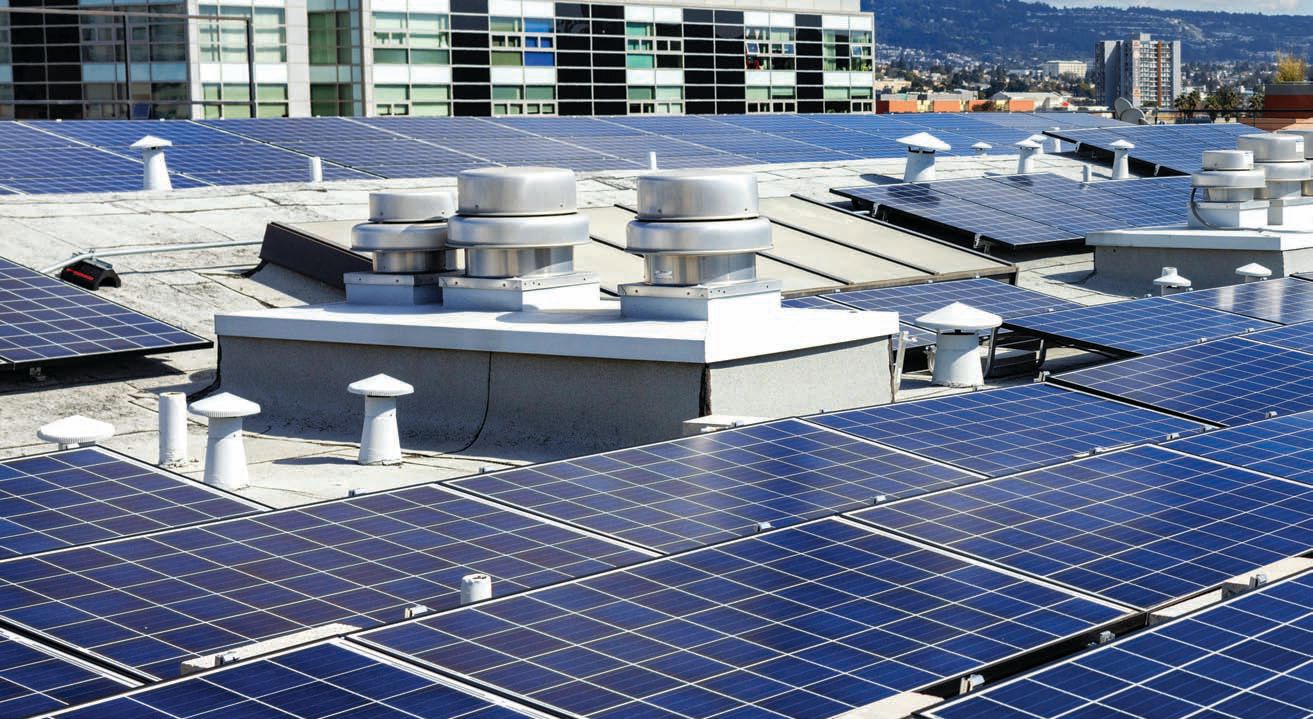January 14, 2018

The needs of nonresidential energy customers are changing. Several factors, from changing utility rates, rapid advances in storage technology, declining solar prices, and new demand response programs, offer commercial and industrial energy customers more choices than ever.
With this change, we’ve noticed an attitude shift among some of the solar providers we’ve been talking to lately. We’ve attended InterSolar and SPI for years—and this year, something different was afoot in the nonresidential solar segment. While we’ve been preaching the importance of demand charge management and load flexibility for a long time, this year, leading solar providers were really listening and contributing their own stories to the conversation. We probably talked with at least fifty folks from the commercial and industrial solar business sector this summer, and the theme was clear—the day of the panel salesman is over, and the day of the customer energy solution provider has arrived.
Load Shapes and Demand Charges
Nonresidential customers have complex energy needs that go far beyond a simple “go/no-go” decision for a solar project. In particular, commercial and industrial customers pay much of their electricity bill in the form of demand charges. These charges can be quite complex, featuring “ratchets” and other calculations resulting in very high charges that last for many months after a simple operating mistake. In many utility service territories, demand charges comprise more than one-third of the customer’s electricity bill; in a few, it’s more than one-half. In addition to rising demand charges, changes in time-of-use (TOU) rate structures in many states have customers scrambling for solutions. While there is no doubt that solar can deliver signifi cant energy savings to a nonresidential customer, a traditional solar installation provides little or no reduction in demand charges for most accounts, nor any control over the time of day when energy is consumed.
A solar installation that delivers big energy savings may result in little or no demand savings. As shown in Figure 1, a single cloud at the wrong time on the wrong day can wipe out a month’s worth of savings. Without appropriate demand management technology, net load can “spike” to create a new monthly peak demand.
When preparing a proposal for a nonresidential customer, solar providers are finding that these customers are now more sophisticated about their energy needs. Odds are good that a storage provider has already come calling to see if a battery system could help with TOU rates and demand charges; but batteries are still very expensive, and in states without significant subsidies, they often don’t pencil out on their own, either.

In the face of these market changes, the message we heard over and over in our summer interviews was, “it’s time to get off the roof and come inside.” Until a solar provider has a more complete picture of a customer’s energy needs–their energy usage patterns, and the business needs driving those patterns –that provider is competing at a disadvantage.
With all the news about battery storage, and as battery costs continue dropping, some smart solar providers are exploring becoming solar-plus-storage providers. In some states, with high incentives for batteries (and with some clever use of the Investment Tax Credit), this can be a good combination. In many cases, load flexibility is both more valuable and less expensive than batteries. Simple changes in operation (undetectable to building occupants in commercial buildings, and easy to manage in many industrial facilities) can offset the variation in solar output and eliminate spikes that cause high demand charges – but only with the right tools. Such load flexibility can actually complement storage solutions; with the right analysis, taking advantage of flexible loads can help a customer to “right-size” energy storage subsystems for a more cost-effective total package. The solar “triple play” – solar, plus storage, plus load flexibility – can be a potent solution to a variety of customer energy challenges.
While the technology outlook is bright, the biggest change required is cultural. Solar providers with a high comfort level matching panels and inverters to customer roofs and electrical systems may face a steep learning curve when moving into the less-familiar world of building and industrial operations. Inside the facility, it’s a whole different world – but one that every complete customer energy solutions provider must understand.
The Biggest Change
There are no serious technical impediments to nonresidential solar solutions that deliver both energy and demand charges savings. The trends are all in favor of such solutions:
• Storage devices (both batteries and thermal storage) are declining in price quite rapidly; new announcements from both established and new storage vendors appear weekly.
• Building and industrial controls are becoming more sophisticated and more standardized.
• Sensors and data networks are increasingly affordable and more universally deployed.
• Big data analytics are becoming more widespread, powerful, and accessible.
• Software solutions taking advantage of machine learning and advanced control algorithms will soon be widely available for application in real-world customer energy solutions.
The good news is that many of the initial fact-finding steps are the same as those required for solar installations everywhere. The customer billing data, load profile data, and utility tariff information remain the foundation of any good proposed solution. Creating a complete energy solution, however, requires a more complete supplier ecosystem than most current solar providers can deliver alone.

At InterSolar and SPI this year, some of the most fruitful conversations we had were about the development of that bigger ecosystem. Numerous battery vendors, many of whom originally came out of the market for small, off-grid applications, began to describe how their offerings could be adapted for commercial building applications in demand-charge reductions. Software startups, many of whom got their start from U.S. DOE SunShot awards, contributed ideas for better data visualization and control. And while control vendors have not even been present at past solar events, a few are starting to recognize the synergies between solar and load flexibility.
As solar providers begin to broaden their offerings (and their approach to partnering), the future is promising for innovators who embrace a total energy solution approach for commercial and industrial customers. We invite feedback and conversation with any solar providers with insights into how the nonresidential market is changing, and how to strengthen the emerging ecosystem of nonresidential energy solution providers.
About the Author
John Powers is an energy economist with more than 30 years of experience in consulting and technology development for the electric utility industry, John has worked in energy efficiency, demand response, and renewables for most of his career.




